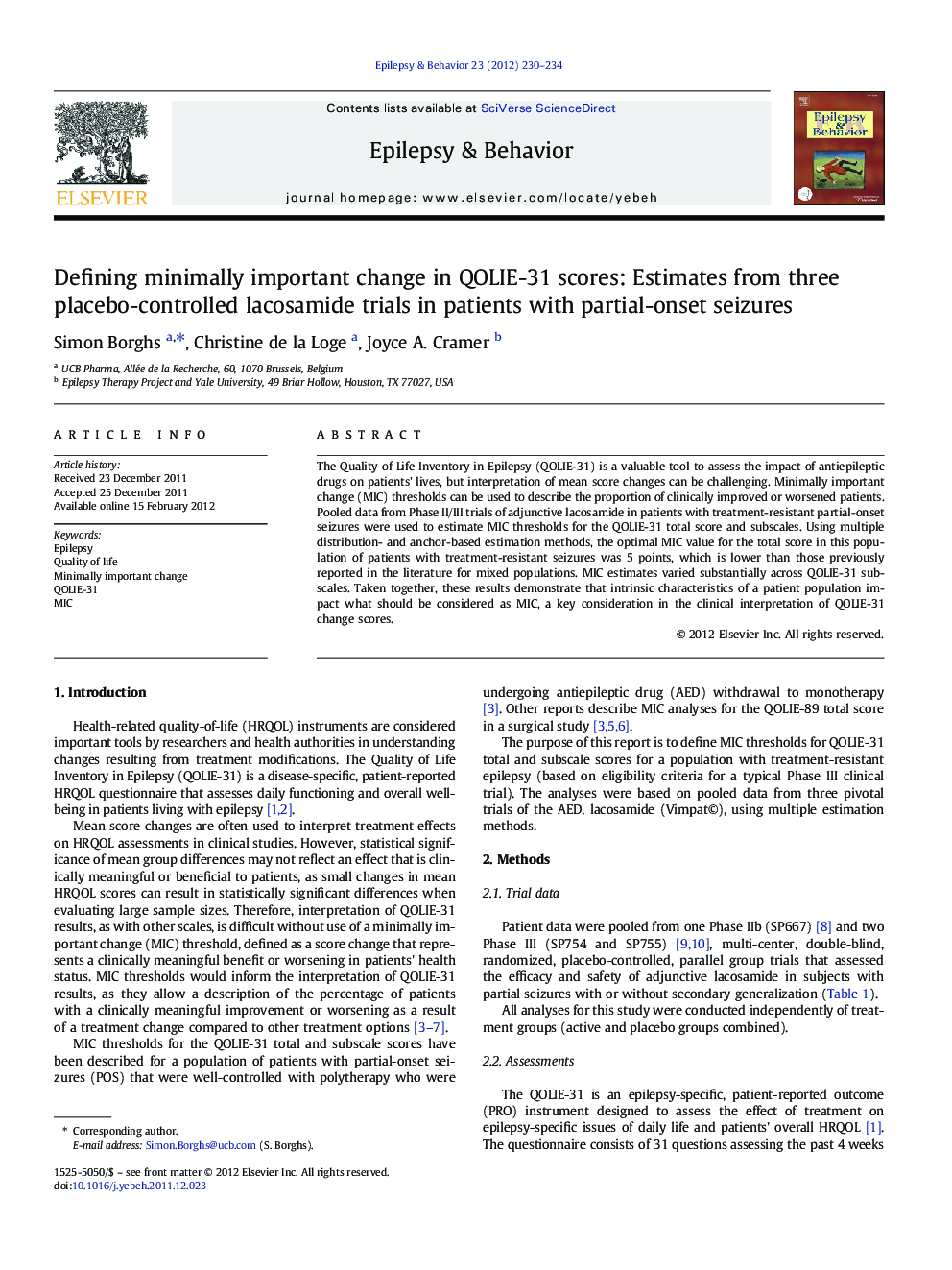| Article ID | Journal | Published Year | Pages | File Type |
|---|---|---|---|---|
| 6014543 | Epilepsy & Behavior | 2012 | 5 Pages |
The Quality of Life Inventory in Epilepsy (QOLIE-31) is a valuable tool to assess the impact of antiepileptic drugs on patients' lives, but interpretation of mean score changes can be challenging. Minimally important change (MIC) thresholds can be used to describe the proportion of clinically improved or worsened patients. Pooled data from Phase II/III trials of adjunctive lacosamide in patients with treatment-resistant partial-onset seizures were used to estimate MIC thresholds for the QOLIE-31 total score and subscales. Using multiple distribution- and anchor-based estimation methods, the optimal MIC value for the total score in this population of patients with treatment-resistant seizures was 5 points, which is lower than those previously reported in the literature for mixed populations. MIC estimates varied substantially across QOLIE-31 subscales. Taken together, these results demonstrate that intrinsic characteristics of a patient population impact what should be considered as MIC, a key consideration in the clinical interpretation of QOLIE-31 change scores.
⺠We recommend 5.19 as the QOLIE-31 total score MIC in patients with treatment-resistant partial-onset seizures. ⺠MIC estimates varied substantially across QOLIE-31 subscales. ⺠In general, our estimates are lower than previously reported. ⺠Study patient characteristics impact what can be considered the MIC on the QOLIE-31.
